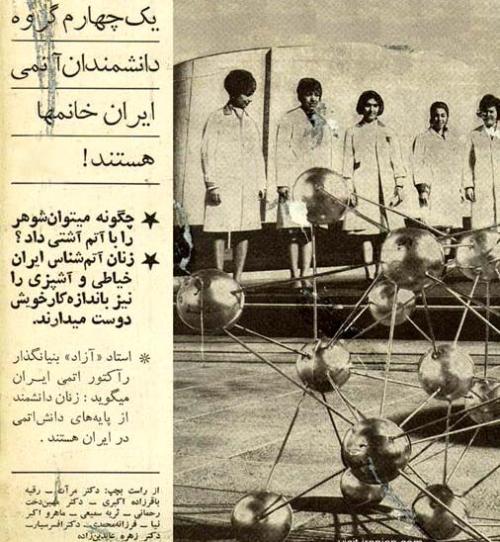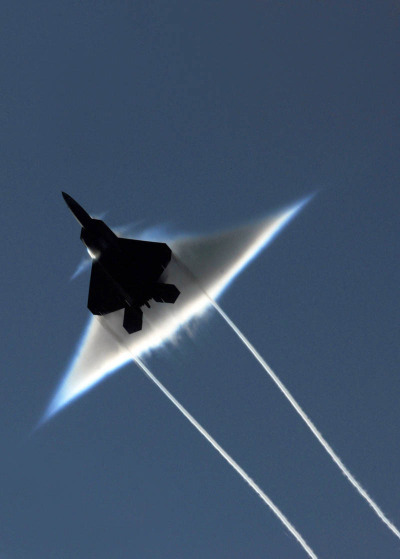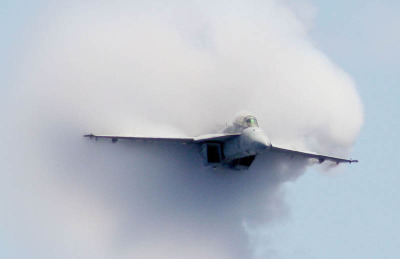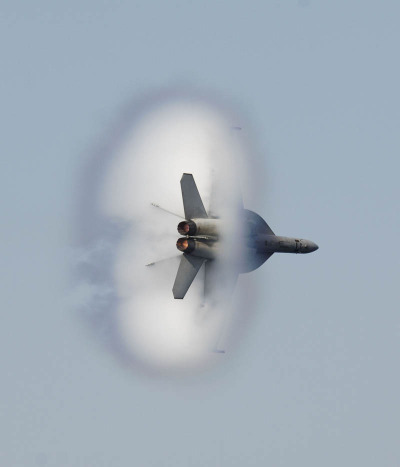One Of New York Central’s “Mercury” Engines In Chicago, 1936.

One of New York Central’s “Mercury” engines in Chicago, 1936.
More Posts from Engineeringtrivia-blog and Others

The simple physics behind a Fidget Spinner
When you want something to spin for a really long time you need to make sure that the friction does not slow it down.

And we can do this by adopting ball bearings. This is so because friction offered due to rolling is much smaller than due to sliding.

And many Fidget spinners indeed use ceramic ball bearings to keep them spinning for a long time. **
Mass Distribution
The next most crucial component is the Angular Momentum. Angular momentum is equal to the product of rotational velocity and the moment of inertia.

And by distributing more mass towards the edge, the fidget spinner gains high moment of inertia keeping it spinning longer.
That’s why the spinners have that weird peculiar shape.
But, Why do they feel alive ?

The angular momentum of a fidget spinner happens to point outwards from the spinner’s center.
And so to change the direction of the momentum — rotating the spinner with your fingers — you must apply a force. You push on the spinner, and the spinner pushes back on you.
That’s why a fidget spinner feels like it fights you, like it’s alive.
- Nerdist
A very fascinating toy nevertheless!
** Spin Test : Ceramic Vs Steel ball bearings
*** Fidget spinner trick shots

Iranian newspaper clip, 1968 which reads: “A quarter of Iran’s Nuclear Energy scientists are women.” The picture shows five female Iranian PhDs posing in front of Tehran’s research reactor.






The Vapor Cone.
A vapor cone, also known as shock collar or shock egg, is a visible cloud of condensed water which can sometimes form around an object. A vapor cone is typically observed as an aircraft, or object, flying at Transonic speeds. ( slightly slower than the speed of sound)
The Pressure - Temperature dependence.
As the aircraft approaches the speed of sound, the air pressure around the object drops, and thereby the air temperature drops. If the temperature drops below the dew point, water in the atmosphere condenses to form a cloud in the shape of the shockwave.
Red Bull Stratos and the Vapor Cone.
Remember that epic jump where Felix Baumgartner, as a part of the Red Bull Stratos project broke the sound barrier ( reached Mach 1.25 ) during his descent? But why weren’t vapor cones seen around Felix’s body? Or were they?

Vapor cones are formed only near the ground, where plenty of wet air persists. But when Felix broke the sound barrier, there was no wet air that surrounded him that would enable the formation of Vapor cones.
Have a Good day!
PC: twistedsifter


F1 is more than just racing, it is an engineering battle. In this gif you can see the absolute control of wing tip vortices generated from the front wing. This is just an example to show the extreme aerodynamics that these vehicles are engineered for.
Have a great day!
* What are wing tip vortices ?
** Smoke angels and wing tip vortices

Like this book but… I wish I could read the formulas without a magnifying glass! The formulas, for whatever reason, on a Kindle (I have Kindle Keyboard and Kindle Fire HD) are too small to read. I can use a magnifying glass on the Kindle Keyboard, with the Fire some are still unreadable. Go to Amazon
Well worth the money I bought the first edition, and was impressed. As a US Marine Radar Technician and engineering student, I find that so many of us in the electronics fields either never built a solid foundation in the basics of electronics, or have forgotten a lot of the fundamentals. This is a great book for correcting either of those issues. Go to Amazon
Great learning tool I got the book as a basic introduction to electrical engineering. I have messed around with some simple wireing in the past but never really had any idea what I was doing. This book was great, it had enough in depth explanation to cover my ignorance, and enough technical stuff that I had to scratch my head and re-read it a few times. I loved this book and would absolutely reccomend it to anyone looking at entering the field of electrical engineering, or even if you are just interested in becomming a little more familiar with the technical world we live in. Go to Amazon
Thank you. Thank you. Go to Amazon
Not quite for the total beginner! Grammatical and punctuation errors abound! Circuit diagrams unreadable. This is a Kindle review… Go to Amazon
Really a good interesting book Really a good interesting book. May be a good addendum to your text books to help understand the concepts better. Definitely not a text book or by any means all inclusive, but the author has a way of explaining the fundamentals in laymen’s terms, that anyone can understand. That alone is worth the price of the book and I can count the number of EE books that do that on one hand… er finger. Go to Amazon
Oh it is so informative Darren Ashby really give me so many answers to the mysteries that have always baffled and stress me out with electronics and circuits. After just enough electronics training to create confusion, the recent re-pursuit of an electronics degree feels as if it were catered to with this book. Darren Ashby goes into not only speaking of Boolean Logic in the chapter I have just finished, but he also gives the print of how the actual logic gate looks with hardware!! Its like omg! guys, omg! The thought and explanitions in this book is a great un-confuse-er with electronic circuits…….A great read Go to Amazon
Very Informative Book! This one probably one the most well written books for Electrical Engineering I have ever read. Not only would this be helpful for electrical engineers but general electricians as well. Go to Amazon
Four Stars tell a lot of the product . Entertaining style, intuitive, visual approach helps in understanding abstract concepts. Two Stars Five Stars This book and this author, I will say, … Excellent Too basic for any engineer and too vague for a beginner Five Stars Very pleased.


Hydro Robotics! 1/3

Poor Alex :(. If you don’t get it, you can’t be an engineer 😂.

The three stages before an exam. 😂
Take a Virtual Tour of NASA
Welcome to NASA! Today, we’re taking you behind-the-scenes for a virtual tour looking at our cutting-edge work and humanity’s destiny in deep space!

Starting at 1:30 p.m., we will host a series of Facebook Live events from each of our 10 field centers across the country. Take a look at where we’ll be taking you…
Glenn Research Center 1:30 p.m. EDT

Our Glenn Research Center in Cleveland, OH will host a tour of its Electric Propulsion Lab. This lab is where we test solar propulsion technologies that are critical to powering spacecraft for our deep-space missions. The Electric Propulsion Laboratory houses two huge vacuum chambers that simulate the space environment.
Marshall Space Flight Center 1:50 p.m. EDT

Our Marshall Space Flight Center in Huntsville, AL will host a tour from a Marshall test stand where structural loads testing is performed on parts of our Space Launch System rocket. Once built, this will be the world’s most powerful rocket and will launch humans farther into space than ever before.
Stennis Space Center 2:10 p.m. EDT

Our Stennis Space Center in Bay St. Louis, MS will take viewers on a tour of their test stands to learn about rocket engine testing from their Test Control Center.
Armstrong Flight Research Center 2:30 p.m. EDT

Our Armstrong Flight Research Center in Edwards, CA will host a tour from their aircraft hangar and Simulator Lab where viewers can learn about our X-Planes program. What’s an X-Plane? They are a variety of flight demonstration vehicles that are used to test advanced technologies and revolutionary designs.
Johnson Space Center 2:50 p.m. EDT

Our Johnson Space Center in Houston, TX will take viewers on a virtual exploration trip through the mockups of the International Space Station and inside our deep-space exploration vehicle, the Orion spacecraft!
Ames Research Center 3:10 p.m. EDT

Our Ames Research Center in California’s Silicon Valley will bring viewers into its Arc Jet Facility, a plasma wind tunnel used to simulate the extreme heat of spacecraft atmospheric entry.
Kennedy Space Center 3:30 p.m. EDT

Our Kennedy Space Center in Florida will bring viewers inside the Vehicle Assembly Building to learn about how we’re preparing for the first launch of America’s next big rocket, the Space Launch System (SLS) rocket.
Langley Research Center 3:50 p.m. EDT

Our Langley Research Center in Hampton, Virginia will bring viewers inside its 14-by-22-foot wind tunnel, where aerodynamic projects are tested.
Goddard Space Flight Center 4:10 p.m. EDT

Our Goddard Space Flight Center in Greenbelt, MD will discuss the upcoming United States total solar eclipse and host its tour from the Space Weather Lab, a large multi-screen room where data from the sun is analyzed and studied.
Jet Propulsion Laboratory 4:30 p.m. EDT

Our Jet Propulsion Laboratory in Pasadena, CA will bring viewers to the Spacecraft Assembly Facility to learn about robotic exploration of the solar system.
So, make sure to join us for all or part of our virtual tour today, starting at 1:30 p.m. EDT! Discover more about the work we’re doing at NASA and be sure to ask your questions in the comment section of each Facebook Live event!
Additional details and viewing information available HERE.
Make sure to follow us on Tumblr for your regular dose of space: http://nasa.tumblr.com
Why is Glass Transparent?
We are now in ‘The Glass Age’. It is impossible to imagine a world without glass. From Mobile phones to glass panels, it is omnipresent.
Such a pivotal role does Glass play in our day to day to lives, but yet when confronted with the question - “why is glass transparent?”, we are speechless! But hey! This post is dedicated to answering that burning question.
How do we see things ?
Lights travels in straight lines. When light hits an object, it bounces off other objects (reflects) and enters our eyes. And this information is processed by our brain and this is how we see the object.

An atomic interlude.
You may know that an Atom consists of a nucleus with electrons orbiting around it. These electrons are confined to a trajectory known as an Orbit. And there exists a gap between two subsequent orbits where no electron can exist. Known as an energy-gap or a band gap( Band gap ).
And for an electron to jump from one orbit to another:
It must gain energy and jump to a higher level. ( Away from the nucleus )
It must lose energy and jump to a lower level. ( Closer to the nucleus)
The energy to make such transitions is provided by light.

What decides whether an object is Transparent, Translucent or opaque?
Imagine you are now a photon. And you are in a collision course with a material.There are three possible outcomes:

The substance absorbs the photon. This occurs when the photon gives up its energy to an electron located in the material. Armed with this extra energy, the electron is able to move to a higher energy level, while the photon disappears.
The substance reflects the photon. To do this, the photon gives up its energy to the material, but a photon of identical energy is emitted.
The substance allows the photon to pass through unchanged. Known as transmission, this happens because the photon doesn’t interact with any electron and continues its journey until it interacts with another object.
Glass, of course, falls into this last category. Photons pass through the material because they don’t have sufficient energy to excite a glass electron to a higher energy level. And due to this, we are able to see through glass!

If the material absorbs the photon, it is said to be opaque. And if it allows some photon to pass through and others get absorbed, the material is termed Translucent.
Smart Glass.
Glass does not necessarily have to transparent/ translucent/ opaque all the time.
Smart glass is glass whose light transmission properties are altered when voltage, light or heat is applied. Generally, the glass changes from translucent to transparent, changing from blocking some (or all) wavelengths of light to letting light pass through.

-
 nimi-mi-li-suli-ala reblogged this · 1 month ago
nimi-mi-li-suli-ala reblogged this · 1 month ago -
 donalddump4 reblogged this · 1 month ago
donalddump4 reblogged this · 1 month ago -
 donalddump4 liked this · 1 month ago
donalddump4 liked this · 1 month ago -
 brolarwarden liked this · 1 month ago
brolarwarden liked this · 1 month ago -
 severhisnape reblogged this · 1 month ago
severhisnape reblogged this · 1 month ago -
 celta-diabolica liked this · 1 month ago
celta-diabolica liked this · 1 month ago -
 valentinsylve reblogged this · 1 month ago
valentinsylve reblogged this · 1 month ago -
 sirusdog liked this · 1 month ago
sirusdog liked this · 1 month ago -
 eltristan liked this · 1 month ago
eltristan liked this · 1 month ago -
 jiqci reblogged this · 1 month ago
jiqci reblogged this · 1 month ago -
 the-maddest-robot liked this · 2 months ago
the-maddest-robot liked this · 2 months ago -
 zwengle liked this · 2 months ago
zwengle liked this · 2 months ago -
 acousticalkonost liked this · 2 months ago
acousticalkonost liked this · 2 months ago -
 artifactualcavalier reblogged this · 2 months ago
artifactualcavalier reblogged this · 2 months ago -
 artifactualcavalier liked this · 2 months ago
artifactualcavalier liked this · 2 months ago -
 angrygonk reblogged this · 2 months ago
angrygonk reblogged this · 2 months ago -
 angrygonk liked this · 2 months ago
angrygonk liked this · 2 months ago -
 gnollhide reblogged this · 2 months ago
gnollhide reblogged this · 2 months ago -
 gnollhide liked this · 2 months ago
gnollhide liked this · 2 months ago -
 friendofoyster liked this · 2 months ago
friendofoyster liked this · 2 months ago -
 jungobungo42069 reblogged this · 2 months ago
jungobungo42069 reblogged this · 2 months ago -
 fatefulfindings liked this · 2 months ago
fatefulfindings liked this · 2 months ago -
 hypnivaria liked this · 2 months ago
hypnivaria liked this · 2 months ago -
 i-hate-the-bands-you-like reblogged this · 2 months ago
i-hate-the-bands-you-like reblogged this · 2 months ago -
 slurpslurpmmmoatmilk liked this · 2 months ago
slurpslurpmmmoatmilk liked this · 2 months ago -
 saltysowers liked this · 2 months ago
saltysowers liked this · 2 months ago -
 alzraed liked this · 2 months ago
alzraed liked this · 2 months ago -
 0fortuna reblogged this · 2 months ago
0fortuna reblogged this · 2 months ago -
 0fortuna liked this · 2 months ago
0fortuna liked this · 2 months ago -
 gaycoded-vampire reblogged this · 2 months ago
gaycoded-vampire reblogged this · 2 months ago -
 ghostsagainststardust reblogged this · 2 months ago
ghostsagainststardust reblogged this · 2 months ago -
 entinullbutno reblogged this · 2 months ago
entinullbutno reblogged this · 2 months ago -
 entinullbutno liked this · 2 months ago
entinullbutno liked this · 2 months ago -
 wonkaloo reblogged this · 2 months ago
wonkaloo reblogged this · 2 months ago -
 willowmancer liked this · 2 months ago
willowmancer liked this · 2 months ago -
 themorrignasystem reblogged this · 2 months ago
themorrignasystem reblogged this · 2 months ago -
 themorrignasystem liked this · 2 months ago
themorrignasystem liked this · 2 months ago -
 online-silkmoth reblogged this · 2 months ago
online-silkmoth reblogged this · 2 months ago -
 the-great-dumpster-fire reblogged this · 2 months ago
the-great-dumpster-fire reblogged this · 2 months ago -
 the-great-dumpster-fire liked this · 2 months ago
the-great-dumpster-fire liked this · 2 months ago -
 whoevenisoliver liked this · 2 months ago
whoevenisoliver liked this · 2 months ago -
 violeteclipse2002 liked this · 2 months ago
violeteclipse2002 liked this · 2 months ago -
 fulcrum46 reblogged this · 2 months ago
fulcrum46 reblogged this · 2 months ago -
 fulcrum46 liked this · 2 months ago
fulcrum46 liked this · 2 months ago -
 topolino1945 liked this · 2 months ago
topolino1945 liked this · 2 months ago -
 quantumized-insanity reblogged this · 2 months ago
quantumized-insanity reblogged this · 2 months ago